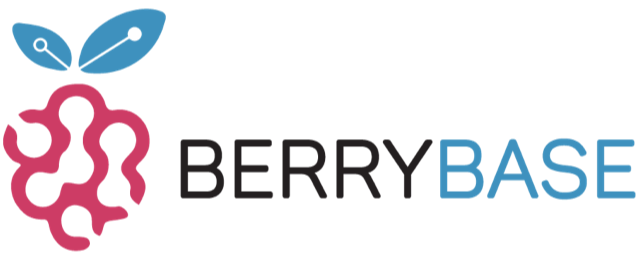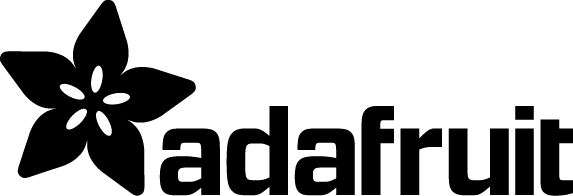No results were found for the filter!
Article no.: LIGHT-SENSOR
Article no.: GY-302
Article no.: TCRT5000
Article no.: IR-REC38
Article no.: KY-018
Article no.: GY-9960
Article no.: SE-101020341
Article no.: GY-2561
Dieses Modul mit ML8511 Chip ist ein einfach zu nutzender Sensor für ultraviolettes Licht. Der Sensor gibt ein analoges Signal im Verhältnis zur gemessen Intensität an UV-Licht aus. Sie können dieses Modul z.B. für eine Wetterstationen verwenden.
Das Modul erkennt zuverlässig 280-390nm Licht. Dies entspricht teilen des UVB Spektrums und den meisten UVA-Wellen.
Das Modul erkennt zuverlässig 280-390nm Licht. Dies entspricht teilen des UVB Spektrums und den meisten UVA-Wellen.
Article no.: GY-ML8511
Der TCS230 / TCS3200 ist ein leistungsstarkes IC zur Farberkennung. Vier Leuchtdioden erhellen das zu erkennende Objekt in einem gleichmäßigen Farbton.
Die Steuerung und Überwachung erfolgt direkt von einem Mikrocontroller, z.B. Arduino, Raspberry Pi. Das hochauflösende IC von TAOS liefert dabei ein Rechtecksignal proportional zur Wellenlänge.
Die Steuerung und Überwachung erfolgt direkt von einem Mikrocontroller, z.B. Arduino, Raspberry Pi. Das hochauflösende IC von TAOS liefert dabei ein Rechtecksignal proportional zur Wellenlänge.
Article no.: TCS230
Grove - Sunlight Sensor is a multi-channel digital light sensor, which has the ability to detect UV-light, visible light and infrared light. It offers excellent performance under a wide dynamic range and a variety of light sources including direct sunlight. Suitable for your Raspberry Pi weather station or smart irrigation system using Arduino if you need to monitor the visible spectrum.
Article no.: SE-101020089
The Grove - Light Sensor v1.2 is an analog module and can output various electrical signals which can be converted to different ranges. It integrates LS06-S photoresistor, a high-sensitive and reliable photodiode, to detect the intensity of light in the environment. It is a perfect Arduino light sensor module for light measurement, light detection, and light-controlled switch.
Article no.: SE-101020132
Article no.: IRRM-4
Article no.: SE-101020173
Der SparkFun Qwiic Mini ToF Imager ist ein hochmoderner 64 Pixel Time-of-Flight (ToF) Sensor mit vier Metern Reichweite, der auf dem VL53L5CX von STMicroelectronics basiert. Diese Mini-Version ist nur halb so groß (0.5in. x 1in.) wie unser Standard Qwiic VL53L5CX Board. Außerdem haben wir die Qwiic-Anschlüsse auf die Rückseite der Karte in vertikaler Ausrichtung verlegt. Diese Designänderungen begünstigen Montageanwendungen, bei denen der VL53L5CX-Sensor aus einem Gehäuse oder Chassis herausragt, und sorgen dafür, dass die Qwiic-Kabel sauber verstaut sind.
Article no.: SEN-19013
Article no.: SE-101020049
Article no.: PIM413
Das SparkFun Photodetector Breakout ist eine aktualisierte Version des SparkFun Particle Sensor Breakout und enthält den MAX30101, einen hochempfindlichen optischen Sensor und Nachfolger des MAX30105 und MAX30102. Das MAX30101 Breakout nutzt einen Photonendetektor, um die Menge des zurückkehrenden Lichts zu messen, das von den LEDs zurückgeworfen wird. Dies ist nützlich für verschiedene Anwendungen wie Partikel (z.B. Rauch) Detektion, Näherungsmessungen und sogar Photoplethysmographie.
Article no.: SEN-16474
This module is based on the I2C light-to-digital converter TSL2561 to transform light intensity to a digital signal. It has three detection modes to take your readings (infrared mode, full-spectrum, and human visible mode) and can be used to measure the change in light intensity in various light situations with many popular microcontrollers.
Article no.: SE-101020030
Article no.: SE-101020016
Ein wirklich ausgeklügeltes und genaues Farb- und Leuchtdichtesensor-Breakout, das Raspberry Pi und Arduino-kompatibel ist. Neben der Erkennung von RGB-Farbe und Lichtstärke hat er zusätzlichen Schnickschnack wie 50/60Hz Lichtrauschunterdrückung, einen großen Erfassungsbereich und zwei Beleuchtungs-LEDs.
Article no.: PIM375
Article no.: SE-101020026
Das SparkFun AS7263 Nahinfrarot (NIR) Spektralsensor Breakout bringt die Spektroskopie auf die Handfläche und macht es einfacher als je zuvor, zu messen und zu charakterisieren, wie verschiedene Materialien verschiedene Wellenlängen des Lichts absorbieren und reflektieren. Der AS7263 Breakout ist einzigartig in seiner Fähigkeit, sowohl über eine I2C-Schnittstelle als auch über eine serielle Schnittstelle mit AT-Befehlen zu kommunizieren.
Article no.: SEN-14351
The Grove - Light & Color & proximity sensor is TMG39931 based product, which features advanced detection, Proximity detection, Digital Ambient Light Sense(ALS), Color Sense(RGBC), and optical pattern generation/transmission for broadcast. This four-in-one sensor allows you to collect the data from ambient environmet and ntransfers over the I2C bus.
Article no.: SE-101020580
Dies ist der SparkFun "Time-of-Flight" Range Finder, ein Breakout für den VL6180 Distanzsensor. Im Gegensatz zu den meisten Entfernungssensoren, die sich auf die reflektierte Lichtintensität oder den reflektierten Winkel verlassen, um die Reichweite zu bestimmen, verwendet der VL6180 eine präzise Uhr, um die Zeit zu messen, die das Licht braucht, um von einer Oberfläche zurück zu prallen. Dies verschafft dem ToF-Entfernungsmesser und dem VL6180 einen großen Vorteil gegenüber anderen Methoden, da er viel genauer und unempfindlicher gegen Rauschen sein kann.
Article no.: SEN-12784
Erweitern Sie Ihr Lichtsensorspektrum mit diesem analogen UV-Sensormodul. Es verwendet eine UV-Fotodiode, die den Lichtbereich von 240-370 nm (der das UVB- und den größten Teil des UVA-Spektrums abdeckt) erkennen kann. Der Signalpegel von der Photodiode ist sehr klein, im Nano-Ampere-Bereich, daher haben wir einen Operationsverstärker verwendet, um das Signal auf einen handlicheren Spannungspegel zu verstärken.
Article no.: ADA1918
Dies ist der SparkFun "Time-of-Flight" Range Finder, eine Sensorplatine für den VL6180 Distanzsensor. Im Gegensatz zu den meisten Entfernungssensoren, die sich auf die Intensität des reflektierten Lichts oder den reflektierten Winkel verlassen, um die Reichweite zu bestimmen, verwendet der VL6180 eine präzise Uhr, um die Zeit zu messen, die das Licht braucht, um von einer Oberfläche zurückzuprallen. Dies verschafft dem ToF-Entfernungsmesser und dem VL6180 einen großen Vorteil gegenüber anderen Methoden, da er viel genauer und unempfindlicher gegen Rauschen sein kann.
Article no.: SEN-12785
Suchen Sie nach einer Option zur Erfassung von Umgebungslicht? Das VEML6030 Qwiic Board ist eine großartige Einstiegsoption. Der VEML6030 ist ein hochgenauer Umgebungslichtsensor mit 16-Bit-Auflösung. Noch beeindruckender ist, dass er Licht ähnlich der Reaktion des menschlichen Auges erkennen kann. Durch die Verwendung unseres praktischen Qwiic-Systems ist kein Löten erforderlich, um ihn mit dem Rest Ihres Systems zu verbinden. Dennoch haben wir die Pins im 0,1"-Abstand herausgebrochen, falls Sie lieber ein Breadboard verwenden möchten.
Article no.: SEN-15436
Article no.: SE-101020043
Der SparkFun AS7262 Visible Spectral Sensor Breakout bringt die Spektroskopie auf die Handfläche und macht es einfacher denn je, zu messen und zu charakterisieren, wie verschiedene Materialien unterschiedliche Wellenlängen des Lichts absorbieren und reflektieren. Der AS7262 Breakout ist einzigartig in seiner Fähigkeit, sowohl über eine I2C-Schnittstelle als auch über eine serielle Schnittstelle mit AT-Befehlen zu kommunizieren.
Article no.: SEN-14347
Dieser Reflektierende IR-Sensorist ein einfaches Kunststoffgehäuse mit zwei Elementen - einer IR-LED und einem IR-Fototransistor. Sie können die IR-LED steuern und einschalten, um IR-Licht von Objekten abprallen zu lassen, um deren Reflexionsvermögen zu bestimmen. Weiße & helle Gegenstände reflektieren das Licht, so dass Sie es erkennen können. Schwarze & dunkel gefärbte Gegenstände absorbieren das IR-Licht, so dass es nicht erkannt wird. Ebenso wird der Sensor nicht ausgelöst, wenn sich etwas nicht im Weg des Sensors befindet. Diese Sensoren sind praktisch, wenn Sie erkennen wollen, ob etwas am Sensor vorbeigegangen ist, oder ein sehr...
Article no.: ADA2349
Wenn Sie Ideen für ein Projekt haben, das von der Fähigkeit abhängt, verschiedene Spektren des sichtbaren Lichts zu erfassen und auf der Grundlage dieser Messungen zu reagieren, könnte das Breakout-Board ISL29125 genau das sein, was Sie brauchen. Das ISL29125 Breakout-Board macht es sehr einfach, die Lichtintensität der allgemeinen roten, grünen und blauen Spektren des sichtbaren Lichts zu erfassen und aufzuzeichnen, während IR von Lichtquellen zurückgewiesen wird.
Article no.: SEN-12829
Der LTR390 ist einer der wenigen kostengünstigen UV-Sensoren auf dem Markt, und er ist ein ziemlich guter! Er misst sowohl Umgebungslicht als auch UVA mit einer spektralen Spitzenempfindlichkeit zwischen 300 und 350nm. Sie können damit messen wie viel Sonne Sie abbekommen, bevor Sie sich zudecken müssen.
Article no.: ADA4831
Fügen Sie einen winzigen analogen Lichtsensor hinzu. Der ALS PT19analoge Lichtsensor ist eine großartige Möglichkeit zur Aufrüstung eines Projekts, das eine Fotozelle verwendet und RoHS-Konformität benötigt. Aufgrund des hohen Unterdrückungsverhältnisses der Infrarotstrahlung ist die spektrale Reaktion des Umgebungslichtsensors nahe an der des menschlichen Auges.
Article no.: ADA2748
Der SparkFun Triad-Spektroskopie-Sensor ist ein leistungsfähiger optischer Prüfsensor, der auch als Spektralphotometer bezeichnet wird. Drei AS7265x-Spektralsensoren werden zusammen mit einer sichtbaren, UV- und IR-LED kombiniert, um verschiedene Oberflächen für die Lichtspektroskopie zu beleuchten und zu prüfen. Die Triade besteht aus drei Sensoren, dem AS72651, dem AS72652 und dem AS72653, und kann Licht von 410nm (UV) bis 940nm (IR) erfassen. Darüber hinaus können 18 einzelne Lichtfrequenzen mit einer Präzision von bis zu 28,6 nW/cm2 und einer Genauigkeit von +/-12% gemessen werden.
Article no.: SEN-15050
Der SparkFun Qwiic ToF Imager ist ein hochmoderner 64 Pixel Time-of-Flight (ToF) 4 Meter Entfernungssensor, der auf dem VL53L5CX von ST basiert. Dieser Chip integriert ein SPAD-Array, physikalische Infrarotfilter und diffraktive optische Elemente (DOE), um die beste Entfernungsmessung unter verschiedenen Umgebungslichtbedingungen mit einer Reihe von Deckglasmaterialien zu erzielen.
Article no.: SEN-18642
Viewed



















































